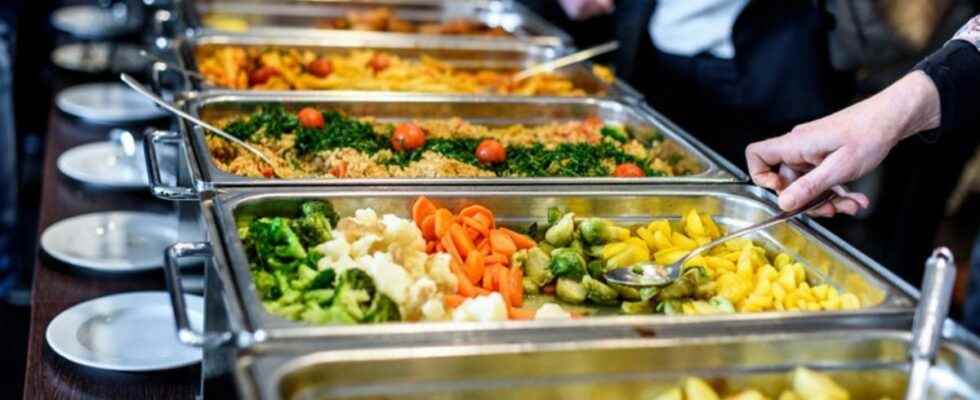Published on
Updated
Reading 2 mins.
On the steamy window of the canteen of Polytechnique Montreal, students can recently read next to the price of the dishes, their carbon footprint, information that surprises more than one.
“I’m surprised to see that a dish with meat is rated higher than a vegetarian dish”says Elizabeth Labonté, a chemical engineering student.
Every Thursday, three hot dishes are given a grade from A to F which corresponds “at a certain range of kilograms of CO2 equivalent”explains Patrick Cigana of the establishment’s Sustainable Development Office.
Supported by the student community, this project has “aims to help educate and raise awareness”says Mr. Cigana.
“It can help students know what is best for the environment”confirms Marie Lourioux, a 22-year-old student who also suggests reducing the price of the least polluting dishes.
“For there to be a real change in our mentalities, we really have to become aware of this parameter”adds Daniel Fernandez, a master’s student, who is about to taste his meat parmentier rated B compared to the vegetable focaccia rated D+ because of its cheese au gratin.
From farm to plate
In order to calculate the carbon footprint of each dish, the university calls on analysts from the International Reference Center for Life Cycle Analysis and Sustainable Transition (CIRAIG), located about a hundred meters from the university campus.
A small team of researchers and students then had to calculate the carbon footprint of each ingredient “based on databasesdeveloped in previous studies.
“It really starts from the field, from the moment we are going to cultivate the plant, until the dish is served in the cafeteria”explains François Saunier, Deputy Director General of the research center.
Pointing to diagrams on his computer, he specifies that these calculations include all transport, but also food waste as well as cooking at the university canteen.
“There are certain results that push the consumer to ask questions and that breaks down preconceived ideas”adds the researcher, mentioning the high carbon footprint of cheese or rice “which is a major source of methane emissions”.
“Immense Power”
Often misunderstood, the food system (the production, packaging, distribution of food, etc.) represents the “largest source of greenhouse gas emissions worldwide”recalls Carole-Anne Lapierre, analyst in agriculture and food systems at Equiterre.
The Polytechnique initiative “gives us immense power as consumers, because we can make different choices”adds the expert who however recognizes the difficulty of completely changing your diet and recommends doing it “in the form of challenges”, step by step.
Although the pilot project of the Quebec university is unique in Canada, similar concepts were developed on the menu of certain British restaurants or even in a French university in 2019.
But for some, the “first priority is above all the price”, especially in a period of high inflation, loose Chelbali Ryad, a 24-year-old student, just after paying for his meal.
For Patrick Cigana, the most important thing is to raise awareness: “everything people learn through this program, they can apply it at home too”.
